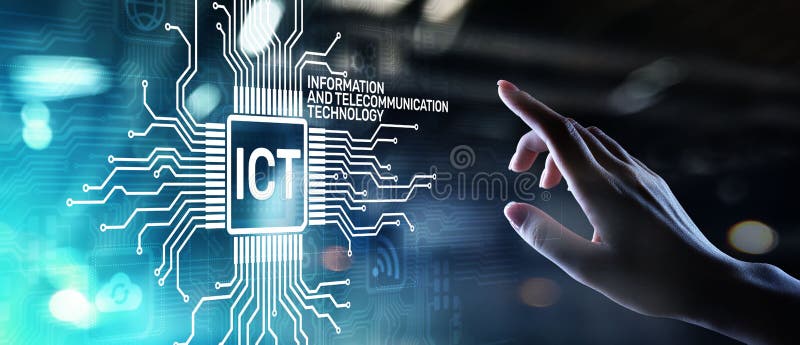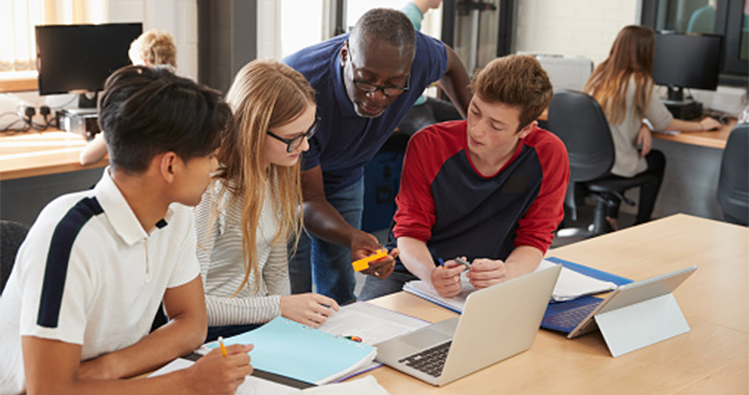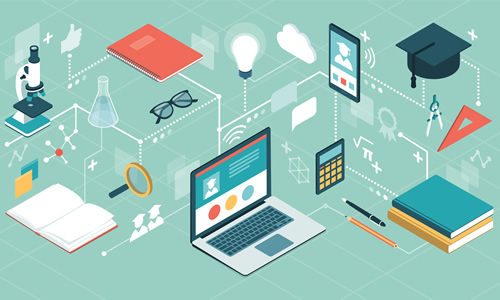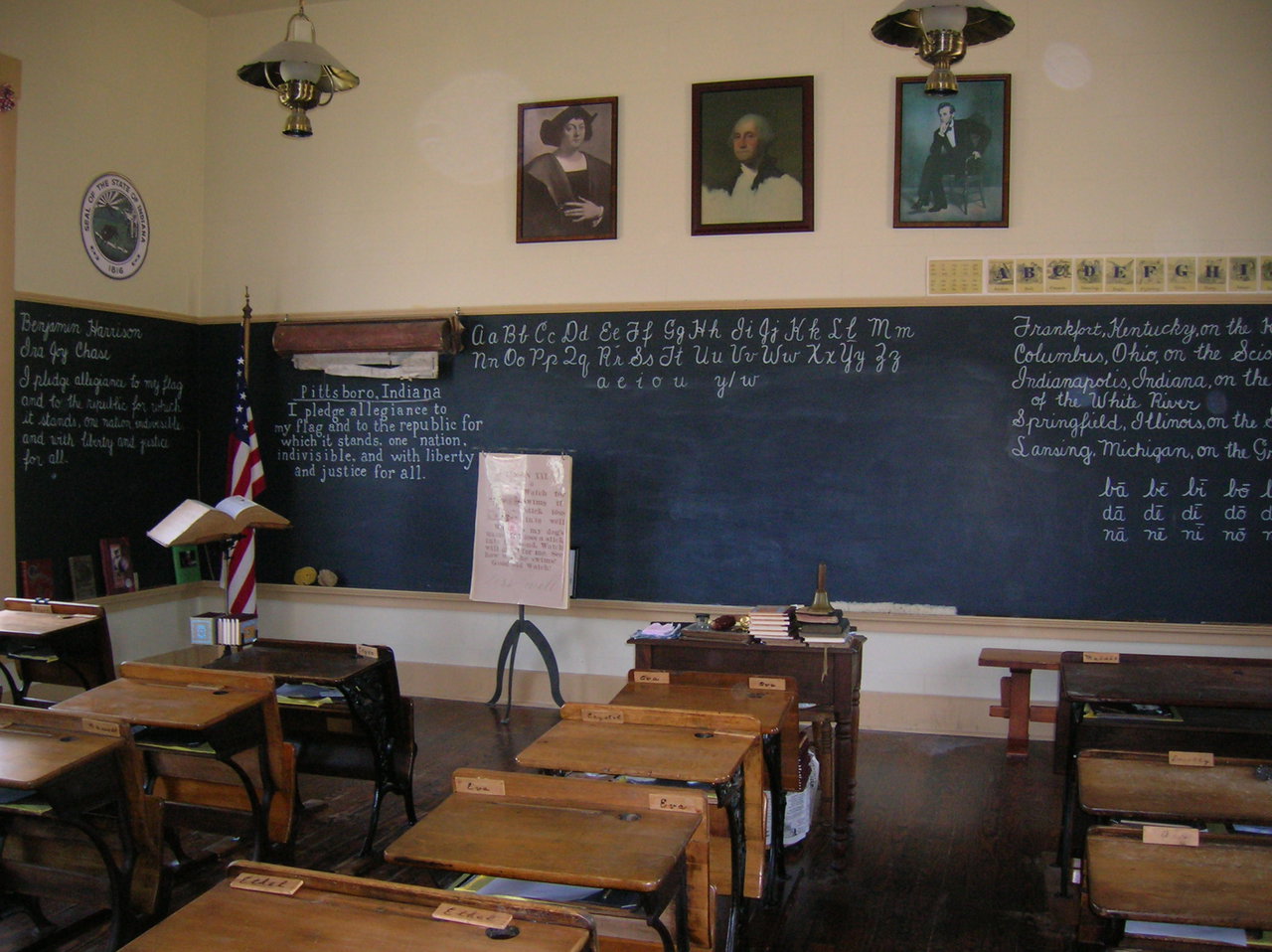ICT and Conventional Learning materials to enhance teaching-Learning
What is Technology?
Technology is an effective tool that can make education more meaningful and engaging for teachers and students alike.

LEARNIG OBJECTIVES:
Key topics discussed in this Page are the following:
- What are Conventional Learning Resource
- How does it Benefits the growth or the enhancement of a teacher or a student
- What are Digital Learning Resource
A TEST OF YOUR KNOWLEDGE 
Down below is an image of a teacher teaching his students about how to use technology and some other website that will help them, In your own observation of the picture what or how will both teacher and students benefit to each other? how will both parties learn from one another? or does the students only get the benefits? or on the otherhand does the teacher only get the benefits? explain briefly your observation

.
What are Digital Learning Resources?
Digital Learning Resources (DLRs) are digital resources such as apps, software, programs, or websites that involve students in learning activities and provide feedback. Assist students in achieving their learning objectives. Digital academic content tools, digital productivity tools, and digital communication tools are the three types of DLRs.

Digital Academic Content Tools
Applications and software (applications), (programs), or websites that provide services material for academics resources and/or participation students participating in events either learn academic material or talents, including but not limited to including but not limited to language and material or abilities in literacy.
Dictionaries, encyclopedias, e-books, subject blogs, and/or topic-focused websites that serve as information resources, such as an online encyclopedia that provides students with photos, data, and videos about animals or a digital dictionary
Digital Productivity Tools
Students plan, document, organize, and evaluate material using software, applications (apps), programs, or websites. They don't have any academic content in them.
Presentation and publication tools that enable students to demonstrate their knowledge of a topic or to write a digital tale about a memorable day. Music, graphics, and/or video may be included.
Digital Communication Tools
Students connect, cooperate, network, and display material via software, applications (apps), programs, or websites. They don't have any academic content in them.
Discussion boards or forums that allow students to publish thoughts and/or comments and share opinions, such as presenting analyses of a novel they have read and providing feedback on the analyses of their classmates. Emails, text messaging, and chats are all options, such as using a chat facility to share peer input on a report.
What are Conventional Learning Resources?
Learning materials belong to the learner. Learning materials are mediums that are not used in the interaction between teachers and learners but instead enable a direct access to the curriculum. Conventional learning materials include textbooks, readings, or a calculator. In contrast to teaching aids, learning resources do not remain in the educational institution, but can be carried by students.

- The primary goal of teaching and learning materials is to boost student motivation and attention while also making the subject more comprehensible. The learning process's efficacy can therefore be increased. These products have a special significance for children and young people who are just starting out in school.
- Blackboards, textbooks, charts, pictures, posters, maps, atlases, globes, flashcards, flip cards, worksheets, science lab apparatus and materials, models, crossword puzzles, quizzes, storytelling, dramatization, one-act plays, dictionaries, encyclopedias, reference books are common traditional teaching aids.
Benefits of Technology in learning - teacher materials to Teachers and Students !

Benefits to Teachers:
- Allows teachers to be more flexible - Teachers can use different teaching methods and tools to suit their lessons or students.
- Helps teachers connect more with students - Teachers are able to better communicate with their students and support them in their learning
- Allows access to more resources - Teachers are able to find additional and updated learning resources that can help them with their work
Benefits to Students:
- Allows for a more personalized learning experience - Students have more freedom to choose the methods and tools that help them learn best.
- Improves students' communication skills - Students have access to different channels where they can communicate and collaborate with teachers and fellow students.
- Helps students prepare for the future - Students become equipped to face a highly technological future and will be able to easily adapt.
In Summary
To conclude the study, it is suggested that the integration of traditional and ICT approaches be implemented as a new teaching approach in the teaching process. By combining both approaches, the educational level can be raised, the learning process made more vivid, and students' enthusiasm for problem-solving and critical thinking skills increased. In other words, students will no longer be bound by either one teaching method; they will be able to enjoy the convenience that the new teaching approach provides as well as recognize the benefits of technology-based learning.
References
[1] Azmi, N. The Benefits of Using ICT in the EFL Classroom: From Perceived Utility to Potential
Challenges. Journal of Educational and Social Research, 7(1), 111-118, 2017.
[2] Bingimlas, K. A. Barriers to the Successful Integration of ICT in Teaching and Learning
Environments: A Review of the Literature. Eurasia Journal of Mathematics, Science &
Technology Education, 5(3), 235-245. 2009.
“The great aim of education is not knowledge but action.”
— Herbert Spencer